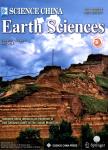Transformation relationship among different magnetic minerals within loess-paleosol sediments of the Chinese Loess Plateau
Transformation relationship among different magnetic minerals within loess-paleosol sediments of the Chinese Loess Plateau作者机构:School of Natural Resources and EnvironmentHefei University of TechnologyHefei 230009China Department of Geology and GeophysicsUniversity of WisconsinMadison WI 53706USA Institute of Surficial GeochemistryState Key Laboratory of Mineral Deposits ResearchDepartment of Earth SciencesNanjing UniversityNanjing 210093China
出 版 物:《Science China Earth Sciences》 (中国科学(地球科学英文版))
年 卷 期:2009年第52卷第3期
页 面:313-322页
核心收录:
学科分类:0709[理学-地质学] 070901[理学-矿物学、岩石学、矿床学] 07[理学] 0708[理学-地球物理学] 0704[理学-天文学]
基 金:Supported by National Natural Science Foundation of China (Grant Nos. 40772032 and 40573054) National Basic Research Program (Grant No. 2007CB815603)
主 题:Chinese loess-paleosol sequence magnetic minerals phase relationships mineralogy
摘 要:The dominant magnetic minerals and carriers of magnetic signals within the Chinese Loess Plateau are magnetite, maghemite, hematite, and goethite. In this study, we investigated the provenance and evo- lution of magnetic minerals during loess pedogenesis, using X-ray diffraction (XRD) and optical and electron microscopy, including field emission scanning electron microscopy (FESEM) and high- resolution transmission electron microscopy (HRTEM). Our results reveal that single- and multiphase mineral assemblages among magnetic minerals in the loess-paleosol sequence have been formed. Partial oxidation of coarse eolian magnetite has occurred in the desert source area and the oxidation degree is enhanced after deposition of the dust upon the Chinese Loess Plateau. This mode of origin resulted in a microtexture consisting of an inner magnetite core surrounded by a hematite rim, and strongly affected the magnetic characteristics of the loess. Goethite coexists with hematite in the loess and paleosol, and nanometer-scale hematite is formed upon goethite rims via dehydration. Our study provides direct mineralogical evidence of the magnetic record and paleoclimatic implications of the loess–paleosol sequence of the Chinese Loess Plateau.



